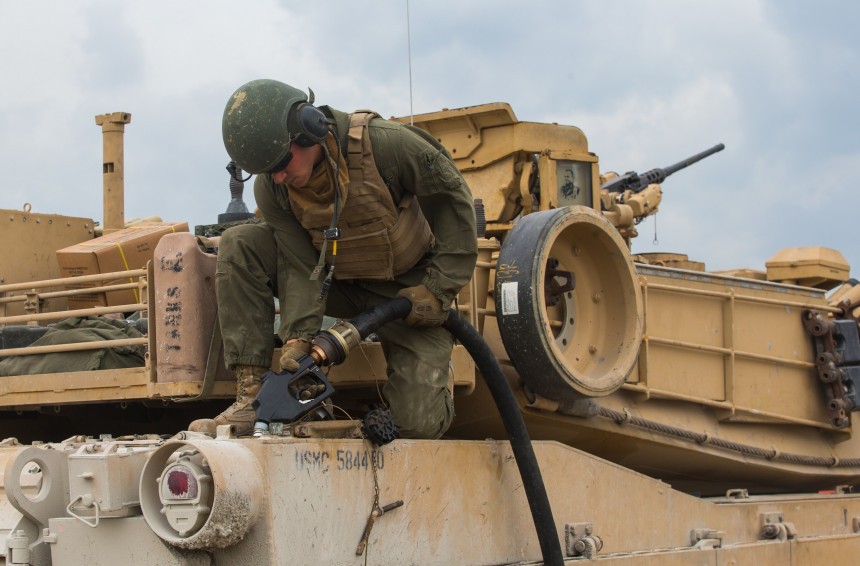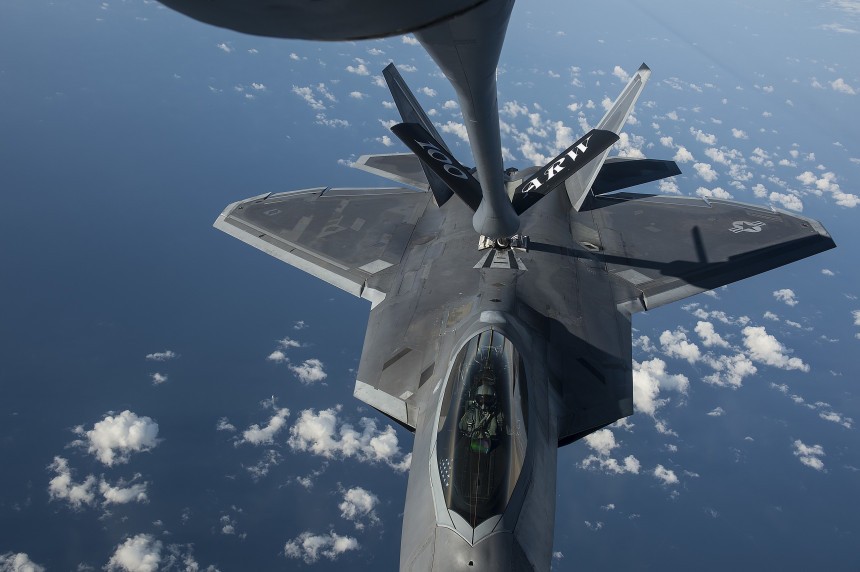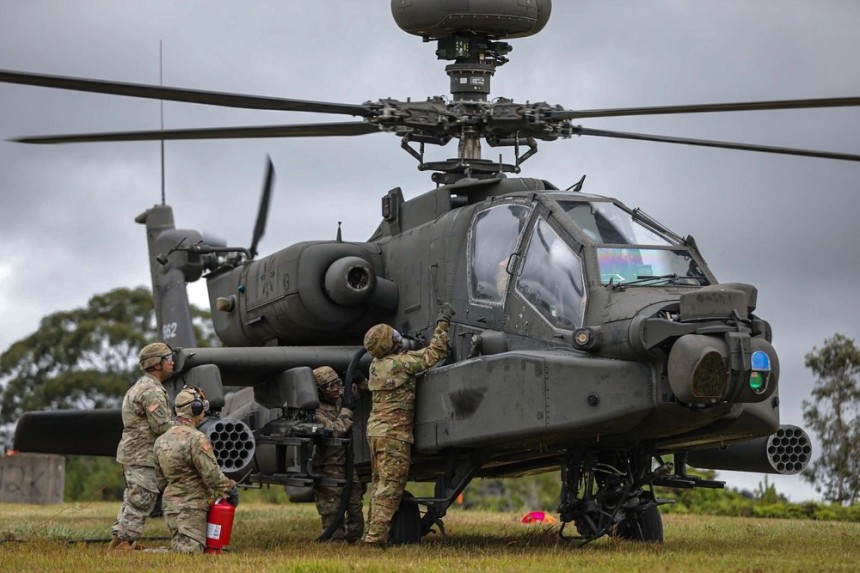The auto industry has spoken. Internal combustion is on its way to dodo status, and we're all going to be forced to drive around in cars and trucks that sound like sewing machines. Sorry if that sounds like your idea of hell.
But there's one group of people around the world that, in all likelihood, will be completely exempt from the EV revolution rapidly enveloping the entire industry. This group, of course, is global armed forces. As it happens, electric vehicles are very much unsuited for the role of military service. Let's take a look at why militaries around the world will likely be exempt from the EV future.
To give you an idea of the amount of oil needed to keep a military like, say, the United States Armed Forces going, we need to understand just how many vehicles in their service all require services like constant refuels and oil changes. It's thought the U.S Military maintains a fleet of over 120,000 Humvees, 25,000 Mine-Resistant, Ambush Protected (MRAP) vehicles, 6,300 tanks, 5,200 fixed-wing aircraft, and about as many helicopters. These are rough numbers, mind you.
Any and all of these vehicles are just as thirsty for oil as they've ever been, even as the world's supply of the stuff is steadily declining as each year passes. But you won't find any military generals who advocate for their militaries to scramble like headless chickens to rip all the engines out of their tanks to replace them with electric motors as we do in the civilian sector.
Why is this? Well, turns out EV powertrains aren't all that cut out for military service just yet. The muddy, bogged down terrain of many modern battlefields doesn't lend itself particularly well even to gas and diesel military vehicles. But watching as an electric truck or tank drains its battery while struggling and failing to find traction in such an environment is not a scenario any self-respecting soldier wants to find themselves in.
Heaven forbid a military finds itself fighting in a particularly cold environment. In that case, good luck getting a full charge into your entire fleet of EVs by the next morning's deployment. If it goes anything like what we've seen some civilian EVs perform in the extreme cold, it's bound to be disastrous.
Granted, there have been a few recent attempts from companies like AM General, GM Defense, and Oshkosh attempting to bring some level of EV and hybrid drive functionality to a modern battlefield. But these are a mere handful of prototypes and concept vehicles, nowhere near at the level of scale required to even partially supplement a fleet of fuel-guzzling Humvees, tanks, and utility vehicles.
Even if implementing a fully EV military vehicle fleet was economically viable or practical. It's not like the U.S. Military isn't prepared for the day when regular civilians finally run out of oil. The United State's Strategic Petroleum Reserve is one of, if not the largest and most expansive stockpiles of emergency petroleum anywhere in the world.
Don't you go thinking any of this strategic reserve is going towards filling up your late 60s muscle car for a far-future Cars & Coffee meetup. Almost every barrel marked for use in the U.S. Strategic Reserve is planned for use in either the most essential public services and utilities, like police, firefighters, gas heating for homes, or explicitly designated for military service.
As many as half a billion barrels of the world's finest quality crude find themselves in underground storage tanks in the U.S. States like Texas and Louisiana. If/when the day comes when politicians sound the alarm, this reserve can have large portions of its stocks depleted and shipped out to whichever battlefield, foreign or domestic, where it may be needed.
It's not a permanent solution by any means, but it will at least guarantee the United States Armed Forces will continue to be operational even in times of great crisis. It's easy to pass off American Military's single fuel doctrine as old-fashioned, poorly thought out, or even foolish.
But remember, a strict dedication to a petro-chemical based fuel able to be refined into a number of sub-fuels suited for different purposes allowed for a streamlined logistics network. One that's eliminated the need for bespoke and separate networks to carry all the different types of fuel one could possibly run in a military vehicle.
It sure beats lugging power generators everywhere to top-up hypothetical electric military vehicles on a modern battlefield. Generators that require petroleum fuel to provide electricity in the first place, mind you. So why would there even be a point?
With all this in mind, hopefully, it's easy to understand why, for the most part, the U.S. Military has been all but exempt from the EV revolution. The lucky dogs them, we're seething with jealousy.
To give you an idea of the amount of oil needed to keep a military like, say, the United States Armed Forces going, we need to understand just how many vehicles in their service all require services like constant refuels and oil changes. It's thought the U.S Military maintains a fleet of over 120,000 Humvees, 25,000 Mine-Resistant, Ambush Protected (MRAP) vehicles, 6,300 tanks, 5,200 fixed-wing aircraft, and about as many helicopters. These are rough numbers, mind you.
Any and all of these vehicles are just as thirsty for oil as they've ever been, even as the world's supply of the stuff is steadily declining as each year passes. But you won't find any military generals who advocate for their militaries to scramble like headless chickens to rip all the engines out of their tanks to replace them with electric motors as we do in the civilian sector.
Why is this? Well, turns out EV powertrains aren't all that cut out for military service just yet. The muddy, bogged down terrain of many modern battlefields doesn't lend itself particularly well even to gas and diesel military vehicles. But watching as an electric truck or tank drains its battery while struggling and failing to find traction in such an environment is not a scenario any self-respecting soldier wants to find themselves in.
Granted, there have been a few recent attempts from companies like AM General, GM Defense, and Oshkosh attempting to bring some level of EV and hybrid drive functionality to a modern battlefield. But these are a mere handful of prototypes and concept vehicles, nowhere near at the level of scale required to even partially supplement a fleet of fuel-guzzling Humvees, tanks, and utility vehicles.
Even if implementing a fully EV military vehicle fleet was economically viable or practical. It's not like the U.S. Military isn't prepared for the day when regular civilians finally run out of oil. The United State's Strategic Petroleum Reserve is one of, if not the largest and most expansive stockpiles of emergency petroleum anywhere in the world.
Don't you go thinking any of this strategic reserve is going towards filling up your late 60s muscle car for a far-future Cars & Coffee meetup. Almost every barrel marked for use in the U.S. Strategic Reserve is planned for use in either the most essential public services and utilities, like police, firefighters, gas heating for homes, or explicitly designated for military service.
It's not a permanent solution by any means, but it will at least guarantee the United States Armed Forces will continue to be operational even in times of great crisis. It's easy to pass off American Military's single fuel doctrine as old-fashioned, poorly thought out, or even foolish.
But remember, a strict dedication to a petro-chemical based fuel able to be refined into a number of sub-fuels suited for different purposes allowed for a streamlined logistics network. One that's eliminated the need for bespoke and separate networks to carry all the different types of fuel one could possibly run in a military vehicle.
It sure beats lugging power generators everywhere to top-up hypothetical electric military vehicles on a modern battlefield. Generators that require petroleum fuel to provide electricity in the first place, mind you. So why would there even be a point?








